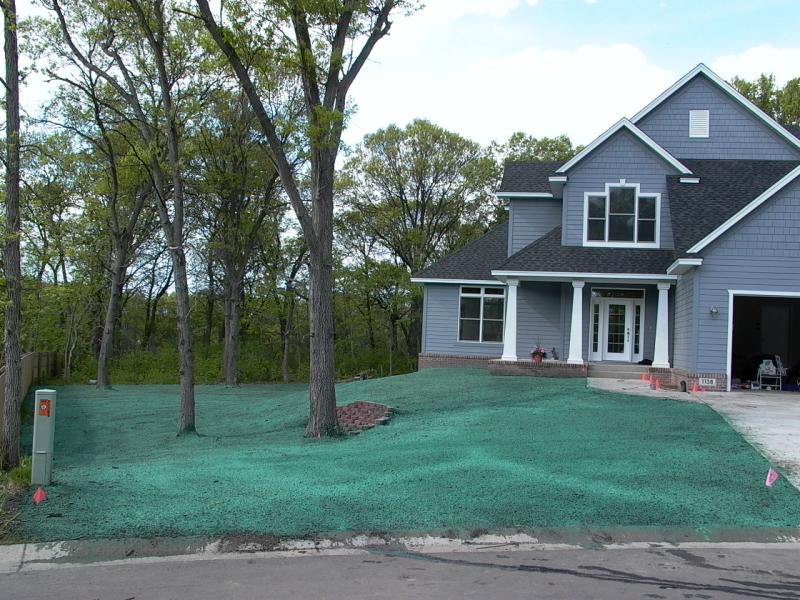Hydroseeding is an efficient way to swiftly produce hydroseed ground cover Southern California and erosion control across huge areas for commercial and residential applications. It is frequently used to swiftly vegetate sizable barren soil areas and make lovely residential lawns.
Hydroseeding is an efficient method of seeding.
Besides the ease of use, hydroseeding can also benefit the environment. The seeds are soaked a day or two before planting, but this process is not essential. Seed primer is a mixture of one part seed and ten parts moist vermiculite or peat. It should be stored in cool conditions for ten days before seeding. Hydroseeding without hydraulic mulch may increase seed damage, so it is important to establish a water source before starting your project.
Another benefit of hydroseeding is its low cost. Hydroseeding may be the ideal option if you have a lot of lands to cover. However, the initial investment can be high, and hydroseeding can save you money in the long run. Hydroseeding is ideal for large fields where ground-based seeders cannot reach the whole area. Hydroseeding also enables you to apply fertilizers, stabilizers, and seeds in one operation. Hydroseeding can also reduce the cost of seed cleaning operations, as seeds do not need to be as clean as traditional methods.
It is cheaper than sod.
Hydroseed ground cover is a great option if you want to install a new lawn in your yard. Hydroseeding is a cheaper alternative to sod and provides a consistent, healthy lawn in a relatively short amount of time. In addition, unlike sod, hydroseeding does not require the same amount of water and does not need a specialized irrigation system.
Depending on the size of your yard, sod is not a cheap option. The time it takes to install a new lawn from seed depends on some factors. The time it takes to fill in a freshly cleared area can range from several weeks to a couple of years.
It provides erosion control.
The process of hydroseeding involves applying a slurry of seed or mulch to a large area. Hydroseeding can be done with most types of seed. The process is ideal for turf grasses and other drought-tolerant grasses but can also be used for wildflowers and shrubs. In addition, it can be supplemented with fertilizer and mycorrhiza fungi.
Temporary seeding is an excellent way to control runoff and erosion in disturbed areas until permanent vegetation is established. It can be planted on almost any surface and provides a residue for soil protection. In addition, it can reduce dust and mud production during construction activities. Whether the surface is bare dirt, gravel, or even concrete, temporary seeding can be an effective solution. Besides road banks, they can also be used in temporary sediment basins.
It is an effective way to seed large areas.
Before you use hydroseed, you should prepare the soil by testing its pH level and fertilizer content. The ratio of phosphorus, nitrogen, and potassium will help the grass seeds grow in healthy and vigorous ways. Phosphorus will help establish deep roots, while nitrogen will promote fast growth and attractive green leaf blades. Next, you should mow the newly seeded lawn every four to six weeks. During this time, avoid walking on it. You may also need to mow it at least once, and you should reseed it as needed.
Hydroseeding trucks use exclusive pumps and powerful hydraulics to distribute seeds in large areas evenly. The trucks spray green dye to guide them as they spread the mixture. The mixture also contains mulch to prevent seed loss and fertilizer to encourage healthy growth. Hydro seeded areas typically sprout in about a week. In contrast, seeding a large area by hand requires considerable time and money. Afterward, it is necessary to apply fertilizers.
It requires soil testing.
Before you hydroseed ground cover, you should first test the soil. The results of a soil test will indicate whether fertilizer or liming is required. These recommendations should be incorporated into the seedbed preparation process. Fertilizers should be applied to new lawns at a rate recommended on the label. In general, new lawns require fertilizer within three days of germination.
Soil testing will tell you the pH of your soil and other key nutrients. It would help if you had a pH between 6.5 and 7 to be successfully hydroseed. To test your soil’s pH, you should visit a university extension office in your area. The extension office will perform the soil analysis and make recommendations. If your soil is too acidic or too alkaline, you should add lime or sulfur to it. To test the pH of your soil, clear it of all debris and weeds. Once you’ve completed your soil testing, you’ll want to spray it with a pre-emergent herbicide to kill any weeds and prevent the seeds from settling in the ground.
















